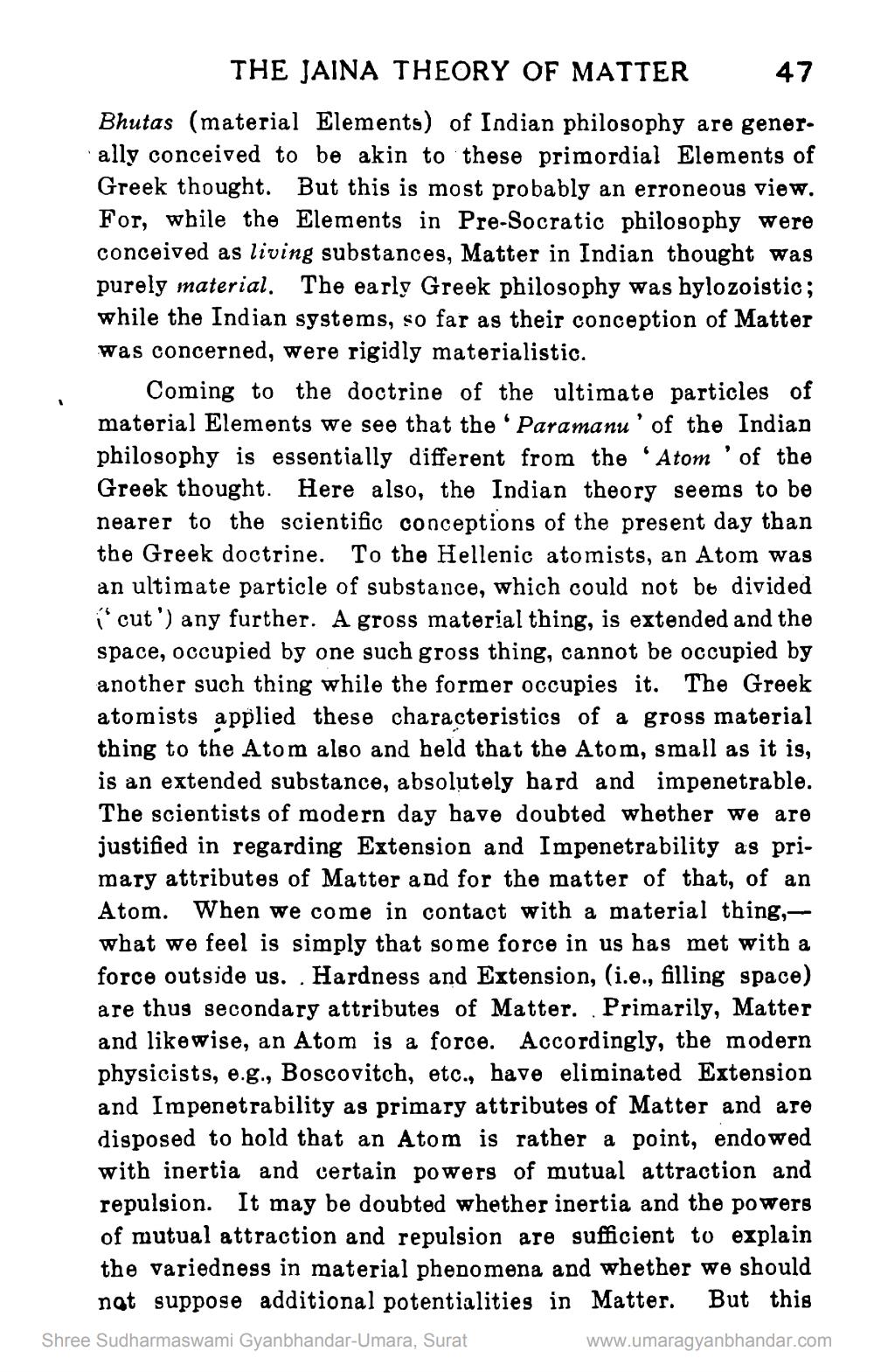Book Title: Jaina Gazette 1930 03 Author(s): Ajitprasad, C S Mallinath Publisher: Jaina Gazettee Office View full book textPage 4
________________ THE JAINA THEORY OF MATTER 47 Bhutas (material Elements) of Indian philosophy are gener. ally conceived to be akin to these primordial Elements of Greek thought. But this is most probably an erroneous view. For, while the Elements in Pre-Socratic philosophy were conceived as living substances, Matter in Indian thought was purely material. The early Greek philosophy was bylozoistic; while the Indian systems, so far as their conception of Matter was concerned, were rigidly materialistic. Coming to the doctrine of the ultimate particles of material Elements we see that the 'Paramanu' of the Indian philosophy is essentially different from the 'Atom of the Greek thought. Here also, the Indian theory seems to be nearer to the scientific conceptions of the present day than the Greek doctrine. To the Hellenic atomists, an Atom was an ultimate particle of substance, which could not be divided i cut') any further. A gross material thing, is extended and the space, occupied by one such gross thing, cannot be occupied by another such thing while the former occupies it. The Greek atomists applied these characteristics of a gross material thing to the Atom also and held that the Atom, small as it is, is an extended substance, absolutely hard and impenetrable. The scientists of modern day have doubted whether we are justified in regarding Extension and Impenetrability as primary attributes of Matter and for the matter of that, of an Atom. When we come in contact with a material thing, what we feel is simply that some force in us has met with a force outside us. . Hardness and Extension, (i.e., filling space) are thus secondary attributes of Matter. Primarily, Matter and likewise, an Atom is a force. Accordingly, the modern physicists, e.g., Boscovitch, etc., have eliminated Extension and Impenetrability as primary attributes of Matter and are disposed to hold that an Atom is rather a point, endowed with inertia and certain powers of mutual attraction and repulsion. It may be doubted whether inertia and the powers of mutual attraction and repulsion are sufficient to explain the variedness in material phenomena and whether we should not suppose additional potentialities in Matter. But this Shree Sudharmaswami Gyanbhandar-Umara, Surat www.umaragyanbhandar.comPage Navigation
1 2 3 4 5 6 7 8 9 10 11 12 13 14 15 16 17 18 19 20 21 22 23 24 25 26 27 28 29 30 31 32 33 34 35 36 37 38 39 40 41 42 ... 112
